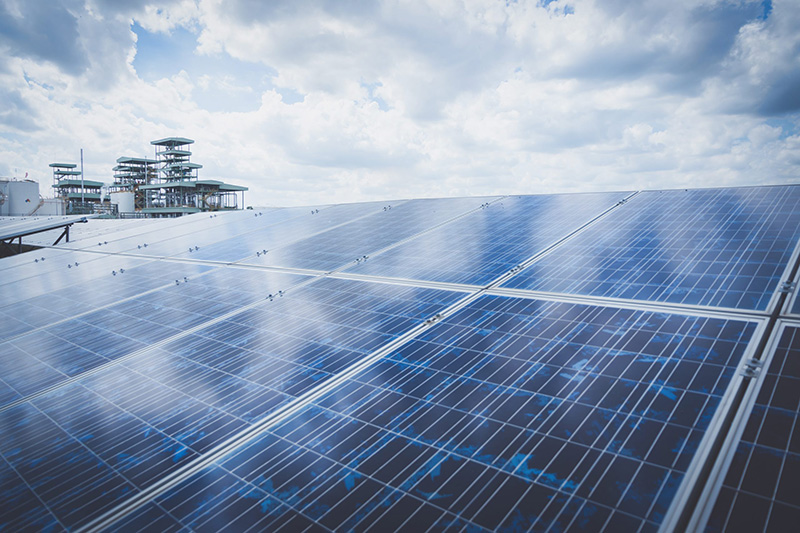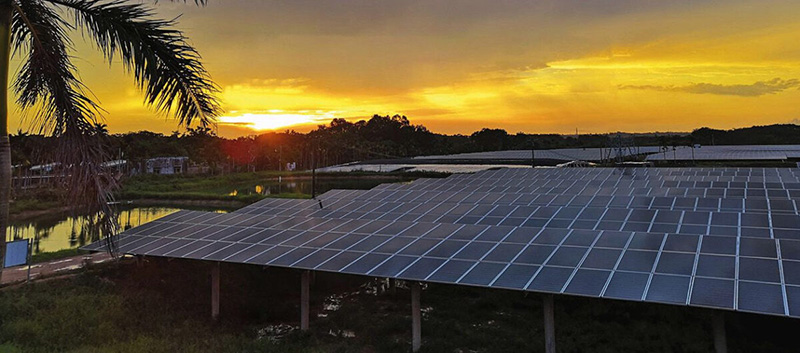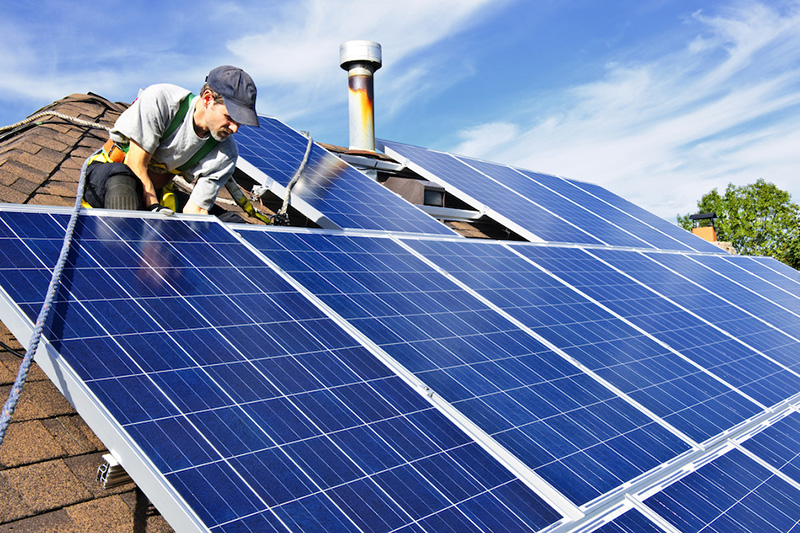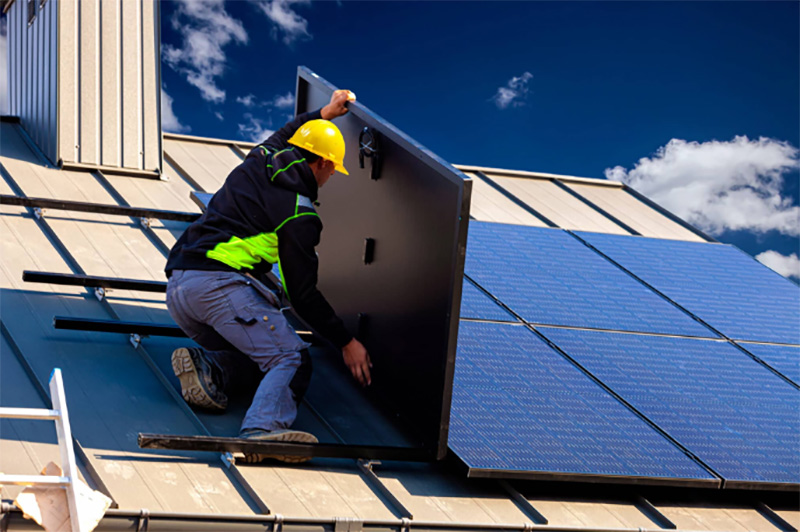Description
Tongwei solar panels, as of recent data, have achieved a monocrystalline rate that exceeds 99%. By optimizing various process technologies, such as multiple busbars, high resistance, dense grid, and alkali polishing, they have managed to significantly improve conversion efficiency while reducing production costs. Currently, the mass production conversion efficiency of their HJT and TOPCon batteries stands at the forefront of the industry. This places Tongwei among the top-tier solar panel manufacturers in terms of efficiency and reliability.

Methods of Measuring Solar Panel Efficiency
Understanding the efficiency of solar panels is crucial as it directly influences the energy output and, consequently, the return on investment for solar installations. The more efficient a solar panel is, the more sunlight it can convert into usable electricity.
Definition of Solar Panel Efficiency
Solar panel efficiency refers to the proportion of sunlight that can be converted by a photovoltaic cell into usable electricity. It's expressed as a percentage, indicating how much of the incident solar power is converted into electricity. For instance, if a solar panel has an efficiency of 20%, it means that 20% of the sunlight that strikes the panel will be transformed into energy. Solar panels on the market today typically have efficiencies ranging from 15% to 22%.
Factors Affecting Solar Panel Efficiency
Several elements play a role in determining how efficient a solar panel can be:
- Material Type: The kind of material used for the solar cell has a significant impact on efficiency. For instance, monocrystalline panels are generally more efficient than polycrystalline panels.
- Temperature: Solar panels tend to be less efficient in high temperatures. Most panels will decrease in efficiency by about 0.5% for every degree above 25°C (77°F).
- Angle and Sunlight Exposure: The angle at which sunlight hits the solar panel and the amount of sunlight the panel receives can dramatically influence efficiency.
- Dirt and Debris: Accumulation of dirt or other obstructions can block sunlight, causing a drop in efficiency.
- Age of the Panel: Like most technologies, solar panels degrade over time. A panel might lose about 0.5% to 1% of its efficiency each year.
- Reflection: If the sunlight is reflected and doesn't get absorbed, the panel's efficiency can decrease. Some advanced panels come with anti-reflective coatings to combat this.
- Electrical Losses: Internal factors, such as resistance in the wires, can lead to energy losses.
By recognizing and addressing these factors, one can optimize the efficiency of solar panels, ensuring maximum energy production and sustainability.

Analysis of Tongwei Solar Panels
In the dynamic landscape of solar panel advancements, Tongwei emerges as a paramount contributor, consistently pushing boundaries and defining new paradigms of efficiency. This dissection delves into the milestones and technological innovations of Tongwei, offers a comparative analysis against its peers, and evaluates its effectiveness in practical environments.
Historical Efficiency Developments of Tongwei Panels
The progression of Tongwei in enhancing solar panel technology underscores their commitment and foresight:
- Monocrystalline Excellence: Tongwei’s breakthrough in achieving a monocrystalline rate surpassing 99% is emblematic of their pursuit of perfection.
- Innovative Integrations: Beyond crystalline purity, Tongwei’s synergy of multiple technological interventions – from dense grid designs to alkali polishing – is a testament to their drive to redefine conversion efficiency while economizing production.
- Benchmark Batteries: Dominating the efficiency charts, the HJT and TOPCon batteries from Tongwei set industry standards.
- Evolutionary Milestones:
- First Generation: Adoption of Thermal hydrogination technology.
- Second Generation: Evolution with 4HCI Autocycle technology.
- Third Generation: Integration of Small-scale cold hydrogenation.
- Fourth Generation: Large-scale cold hydrogenation technology.
- Fifth Generation: The revolutionary Yongxiang Method Gen 5.
- Sixth Generation: Breakthrough with Reactive distillation.
- Seventh Generation: The cutting-edge Yongxiang Method Gen 7.
Comparisons with Other Leading Brands
For a comprehensive understanding, here’s how Tongwei fares when juxtaposed against other titans of the solar industry:
| Brand |
Efficiency (%) |
Key Features |
| Tongwei |
23% |
Advanced Thermal hydrogination, Leading HJT & TOPCon batteries |
| SunPower |
22.8% |
Maxeon cell technology, Solid copper foundation |
| LG Solar |
21.7% |
Neon R technology, Enhanced durability |
| Panasonic |
21.2% |
Heterojunction technology, High thermal stability |
Real-world Performance Data
While lab environments provide precise metrics, the veritable testament to a panel's efficacy is its performance under the caprices of nature and varying conditions:
- Adaptability to Climates: Tongwei panels have consistently demonstrated optimal output even in less than ideal conditions, whether it’s overcast European climates or the intense sun of the Middle East.
- Durability Over Time: Long-term installations of Tongwei panels globally indicate negligible degradation, ensuring consumers receive maximum energy for their investment.
- Compatibility with Grids: In diverse energy infrastructures, from developed urban grids to rural off-grid setups, Tongwei panels seamlessly integrate and deliver consistent power.
- Customer Testimonials: Feedback from large-scale installations, such as solar farms, and individual homeowners consistently applauds the efficiency and reliability of Tongwei panels, reinforcing their reputation.
- Innovative Installations: From floating solar farms in Southeast Asia to desert installations in Africa, Tongwei's adaptability is noteworthy.
In essence, Tongwei doesn't merely produce solar panels; it spearheads a green energy revolution, setting benchmarks not only in technological innovation but also in real-world efficacy.
Technological Advancements in Tongwei Solar Panels
Tongwei's stature in the solar industry is underscored by its innovative strides and an unwavering commitment to excellence. Their panels aren't just panels; they are a testament to years of research, optimization, and technological evolution. The company's advancements have set them apart, solidifying their place as a leader in solar technology.
Proprietary Technologies Employed by Tongwei
Tongwei doesn't merely depend on mainstream technologies; it charts its path with proprietary technologies that have bolstered its efficiency benchmarks:
- Cold Hydrogenation: A unique process that optimizes the conversion efficiency of the solar cells.
- Anti-disproportionation: Ensuring uniformity and optimal performance across the entire solar cell.
- High-efficiency Reduction: Leveraging techniques to maximize energy conversion rates.
- Tail Gas Recovery: A pivotal process that captures and recycles gases, enhancing the panel's environmental footprint.
- High Boiling Cracking: Enhances the durability and stability of the solar panels.
- Thermal Energy Cascade Recycling: Ensures that minimal energy goes to waste by recycling and reusing thermal energy.
- Automatic Control of Electric Appliances: Implements automation to ensure optimal performance and reduce human errors.
- Closed-loop Cycle of Oxygen and Hydrogen Elements: Ensures efficient usage of these elements, enhancing overall panel efficiency.
- Large-scale Energy-saving Distillation: Another eco-friendly initiative by Tongwei to minimize energy wastage.
- Over 320 Patented Technological Achievements: A testament to their relentless R&D, these patents represent innovations that make Tongwei panels stand out.
Innovations and R&D Efforts
Tongwei's advancements aren't just historical; their ongoing research and development efforts promise more breakthroughs. The company invests significantly in its R&D department, ensuring they remain at the frontier of solar technology. From optimizing current technologies to incubating new ones, Tongwei's innovation cycle remains in perpetual motion.
Future Efficiency Predictions
The trajectory Tongwei has taken suggests even more impressive future achievements. With their current rate of innovation, we can anticipate:
- Further Efficiency Boost: Leveraging their patented technologies and R&D findings, it won't be a surprise if they breach the 25% efficiency mark in the coming years.
- Eco-friendly Initiatives: As seen with their tail gas recovery and energy-saving distillation, more eco-initiatives might be on the horizon.
- More Patented Technologies: Given their track record, it's safe to expect a flurry of new patented innovations.
Tongwei's journey, dotted with technological milestones, serves as a beacon for the entire solar industry, enlightening the path toward a more sustainable and efficient future.

Benefits of High-Efficiency Solar Panels
High-efficiency solar panels have steadily gained traction as the demand for sustainable and effective energy solutions rises. They're not just a mere upgrade from standard panels; they represent a transformative shift in how we harness solar energy. Beyond the obvious benefit of producing more energy, these panels offer a myriad of advantages that have significant implications for both consumers and the environment.
Power Generation and Savings
High-efficiency solar panels can be a game-changer, especially in regions with limited sunlight. Their heightened capability to capture and convert sunlight means:
- Maximized Energy Yield: In the same footprint as standard panels, high-efficiency panels can produce significantly more energy. For instance, where a standard panel might convert 15% of the sunlight it receives, a high-efficiency panel could convert upwards of 22%.
- Reduced Energy Bills: With more energy generated, homeowners and businesses can expect a substantial drop in their electricity bills. Over a year, this can translate to hundreds, if not thousands, of dollars in savings, depending on energy consumption patterns.
- Optimal for Limited Spaces: For properties with limited roof space, high-efficiency panels ensure that every square foot counts, making solar installation feasible for more people.
Environmental Impact
The environmental benefits of high-efficiency panels are a compelling argument for their adoption:
- Decreased Carbon Footprint: By generating more electricity per panel, fewer panels are needed to meet energy demands. This means fewer resources used in manufacturing and transportation, ultimately leading to a reduced carbon footprint.
- Conservation of Habitats: With fewer panels needed to generate the same amount of energy, there's less demand for sprawling solar farms, which can sometimes encroach on natural habitats.
- Reduced Greenhouse Gas Emissions: As solar panels offset the need for energy from fossil fuels, high-efficiency panels, by virtue of producing more energy, play an even larger role in reducing greenhouse gas emissions.
Return on Investment (ROI)
From a financial perspective, high-efficiency panels can be quite enticing:
- Quicker Payback Period: Given the energy savings and potential government incentives or rebates, homeowners often recoup their investment in high-efficiency panels faster than with standard panels.
- Increased Property Value: Homes equipped with high-efficiency solar panels often see an uptick in their property value, making it an attractive proposition for those considering selling in the foreseeable future.
- Long-term Savings: Given the longevity of solar panels, the compounded savings over two decades or more can be substantial. This long-term view often justifies the initial investment in high-efficiency panels.
In summary, high-efficiency solar panels represent not just a technological advancement, but a leap toward a more sustainable and economically viable future. Their benefits, spanning financial, environmental, and practical realms, make them a cornerstone in the journey towards a greener planet.






